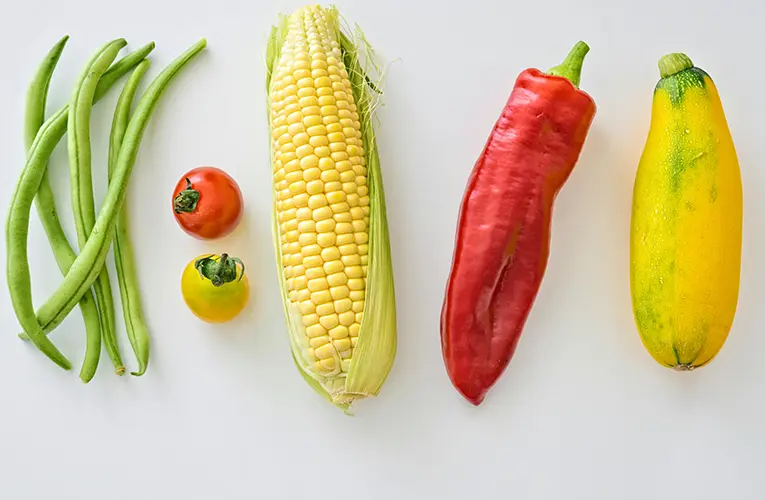“Food Trends and Innovations: What’s New in the Culinary World and How It Affects Your Diet”
### Food Trends and Innovations: What’s New in the Culinary World and How It Affects Your Diet
The culinary world is constantly evolving, with new trends and innovations shaping how we eat, cook, and think about food. From plant-based diets to technological advancements in food production, these trends impact our daily lives and our overall health. This guide explores the latest food trends and innovations, and how they affect your diet.
—
### 1. Emerging Food Trends
#### 1.1 Plant-Based and Alternative Proteins
– **Growth of Plant-Based Foods:** Increasing popularity of plant-based diets is driving innovation in meat alternatives like Beyond Meat and Impossible Foods.
– **New Proteins:** Exploration of alternative protein sources such as pea protein, algae, and insects to meet rising consumer demand for sustainable options.
#### 1.2 Sustainable Eating
– **Locally Sourced Ingredients:** Emphasis on farm-to-table and locally sourced foods to reduce carbon footprints and support local economies.
– **Zero-Waste Cooking:** Techniques and recipes focused on minimizing food waste by using every part of ingredients and repurposing leftovers.
#### 1.3 Functional Foods
– **Health-Boosting Ingredients:** Rising interest in foods that offer health benefits beyond basic nutrition, such as adaptogens (e.g., ashwagandha) and probiotics (e.g., kombucha).
– **Personalized Nutrition:** Growing trend towards customized diets based on genetic testing and individual health needs.
—
### 2. Innovations in Food Technology
#### 2.1 Food Delivery and Meal Kits
– **Convenience:** Growth of meal kit services and online grocery delivery platforms offering pre-portioned ingredients and recipes for easy home cooking.
– **Smart Kitchens:** Integration of technology into home kitchens with smart appliances that offer automated cooking and real-time recipe guidance.
#### 2.2 Food Printing and Lab-Grown Meat
– **3D Food Printing:** Emerging technology allowing the creation of customized food shapes and textures using 3D printers.
– **Cultured Meat:** Development of lab-grown meat products that aim to reduce environmental impact and ethical concerns associated with traditional meat production.
#### 2.3 Advanced Food Preservation
– **Innovative Packaging:** Use of smart packaging technologies to extend shelf life and improve food safety.
– **Freeze-Drying and Dehydration:** Techniques that preserve food while retaining nutrients and flavors, making it convenient for long-term storage and travel.
—
### 3. How These Trends Affect Your Diet
#### 3.1 Nutritional Impact
– **Healthier Options:** Increased availability of nutrient-dense, plant-based foods and functional ingredients can enhance overall diet quality.
– **Personalized Nutrition:** Tailoring diets to individual health profiles can optimize nutrient intake and address specific health concerns.
#### 3.2 Environmental Impact
– **Sustainability:** Adopting plant-based and locally sourced foods contributes to reduced environmental impact and supports sustainable practices.
– **Waste Reduction:** Zero-waste cooking and innovative food technologies help minimize food waste and promote environmental responsibility.
#### 3.3 Culinary Experience
– **Variety and Innovation:** Access to diverse and innovative food options can enrich your culinary experience and encourage exploration of new flavors and techniques.
– **Convenience:** Meal kits and food delivery services offer convenience and ease, making it simpler to maintain a balanced diet despite busy schedules.
—
### 4. Practical Tips for Adapting to Food Trends
#### 4.1 Experiment with Plant-Based Recipes
– **Try New Ingredients:** Incorporate plant-based proteins like tofu, tempeh, and legumes into your meals.
– **Explore Alternatives:** Experiment with dairy-free alternatives and plant-based cheeses to find what suits your taste.
#### 4.2 Embrace Sustainability
– **Shop Locally:** Support local farmers and producers by buying seasonal and locally sourced ingredients.
– **Reduce Waste:** Practice zero-waste cooking techniques by using leftovers creatively and composting food scraps.
#### 4.3 Stay Informed and Experiment
– **Follow Trends:** Stay updated on new food technologies and innovations by following food blogs, attending culinary events, and reading industry news.
– **Try New Products:** Explore new food products and meal kits to see how they fit into your lifestyle and dietary preferences.
—
### 5. Conclusion
Food trends and innovations are reshaping the culinary landscape, offering new opportunities for healthier eating, sustainability, and convenience. By staying informed and embracing these changes, you can enhance your diet, support environmental sustainability, and enjoy a richer culinary experience. Whether you’re exploring plant-based options, experimenting with new technologies, or adopting sustainable practices, these trends provide valuable insights into the future of food and its impact on your lifestyle.
—
This guide offers a comprehensive overview of the latest food trends and innovations, helping you navigate the evolving culinary world and make informed choices about your diet.










